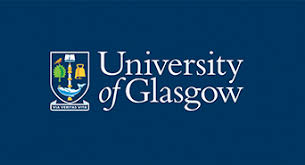University of Glasgow: Pop-Up Book Aims To Help Kids ‘Listen To The Universe
An illustrated pop-up book which aims to teach children about the science of gravitational wave astronomy is setting out to make a splash in India.
‘Listen to the Universe’ is the result of a unique collaboration between an astrophysicist and children’s literature expert from the University of Glasgow. They teamed up with an illustrator and Indian scientists to produce a children’s guide to the advanced technology which underpinned the historic first detection of gravitational waves in 2015.
The book is being launched today, Tuesday 14 September, on the sixth anniversary of the historic first direct detection of gravitational waves at the Laser Interferometry Gravitational Observatory (LIGO) in the United States.
A thousand copies of the book are being distributed to schools in the Hingoli district of Maharashtra state in western India, where LIGO-India, the latest of the world’s growing network of gravitational wave detectors, is currently in the early stages of construction. An online book reading is also set to take place today.
‘Listen to the Universe’ takes the form of a conversation between a girl named Lila and a boy named Gopu who live in the Hingoli district. Lila explains the science of gravitational waves to Gopu, from Einstein’s suggestion of their existence in his General Theory of Relativity in 1915 to their first detection at LIGO a century later. The book is presented in Marathi, the language spoken in the area where LIGO-India will be based.
It includes a dramatic double-page spread illustrating the characteristic inspiral of two black holes before they collide to form an even bigger black hole, and a visual representation of how gravitational waves squeeze and stretch the delicate mirror suspensions in the LIGO detectors.
LIGO-India will be the third detector developed by the Laser Interferometry Gravitational Observatory (LIGO) collaboration. LIGO’s first two detectors, based in Louisiana and Washington in the United States of America, were designed and built by an international partnership which included experts from the University of Glasgow.
Dr Mariela Massó Reid, of the University of Glasgow’s Institute for Gravitational Research, is part of the LIGO collaboration and one of the authors of ‘Listen to the Universe’.
Dr. Massó Reid said: “We were incredibly excited when formal approval for the building of LIGO-India came from the Indian Prime Minister in 2016. However, we were also very conscious that a large observatory was going to be built close to many rural communities. Our initial aim was to introduce and explain the purpose of these large instruments to local people.
“One of the most important things for us was to inspire girls and boys to realise that they can be anything they want – and that girls can be astrophysicists! The book shows that a new generation of scientists and engineers will be needed to operate these new observatories. We deliberately pitched it at early age readers in the hope that many parents will read the book with their children, and learn about the technology along with them.”
In 2018, Dr Massó Reid partnered with Dr Dimitra Fimi, Senior Lecturer in Fantasy and Children’s Literature from the University of Glasgow’s School of Critical Studies, to write the first draft of the book.
They commissioned British illustrator Oliver Dean to help craft the illustrations and pop-up sections which would help bring the science to life, eventually finalising a richly-imagined and interactive 16-page story. They also enlisted the help of Samir Dhurde, Dr Manasadevi P. Thirugnanasambandam, Shivani Pethe and Dr. Surhud More, members of LIGO-India’s Education and Public Outreach team.
Dr Fimi said: “We were keen to work closely with our colleagues in India to make sure that the book is as culturally recognisable as possible. We worked hard with them and with Oliver, who has spent time living and working in India himself, to make sure kids would see themselves in our Lila and Gopu.
“It was also important to us that we showed that girls are interested in science, and that science is a career open to all. We made a conscious decision to have the girl in our story be a little bit older and a little bit wiser, and able to explain the history and science behind gravitational waves.”
Dr Massó Reid said: “We were really excited to work with Oliver as he has worked on gravitational wave illustrations before – we love the job he has done to bring the story to life. We can’t wait to see how local children will react to the book and learn about the fascinating science work that is going to be done at LIGO-India.”
Dr Fimi said: “It was great to have the opportunity to ‘test’ the story with young children here in the U.K., to make sure we had pitched it right for the target age. My seven-year-old son was very proud to be part of this project!”
Professor Tarun Souradeep, spokesperson for LIGO-India, said: “Grand scientific quests that have reshaped human knowledge and capability are spread over
generations.
“This is a lovely introduction for Indian children to the frontier of gravitational-wave science that they will take forward to even loftier heights.”
With support from the Science and Technologies Facilities Council (STFC) and the University of Glasgow’s Global GCRF Small Grants Fund, an initiative supported by an allocation of Global Challenges Research Funds from the Scottish Funding Council, the team have printed 1,000 initial copies of the book.
The team are keen to explore the possibility of translating the book into more languages to help bring the science of gravitational waves to life for children in other parts of the world.

